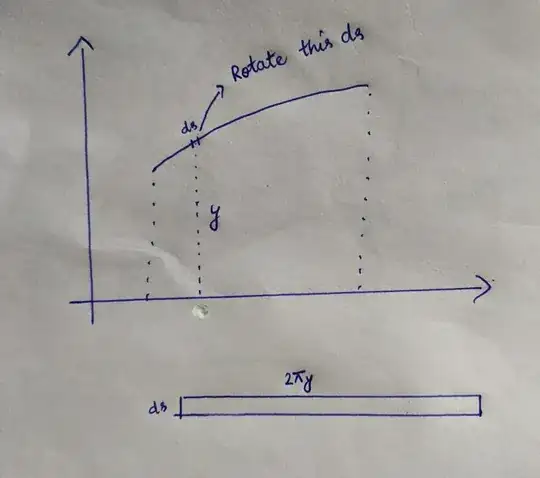I learned from this pdf that the surface area of a revolution is $\int 2\pi y ds$. Why is it not $\int 2\pi y dx$?
I know this is a duplicated question, but I do not think I get a satisfactory answer. There is another pdf that told us the area under curve is $\int y dx$. Why are we using $dx$ in the area calculation, but not the surface area of a revolution?
Why can we use the argument that when the $\Delta x$ gets smaller and smaller, the limitation of $\sum y \Delta x$ is the area under curve, but we cannot use the same argument to the surface of a revolution? Why not say when the $\Delta x$ gets smaller and smaller, the limitation of $\sum 2\pi y \Delta x$ is the surface area of the revolution?
